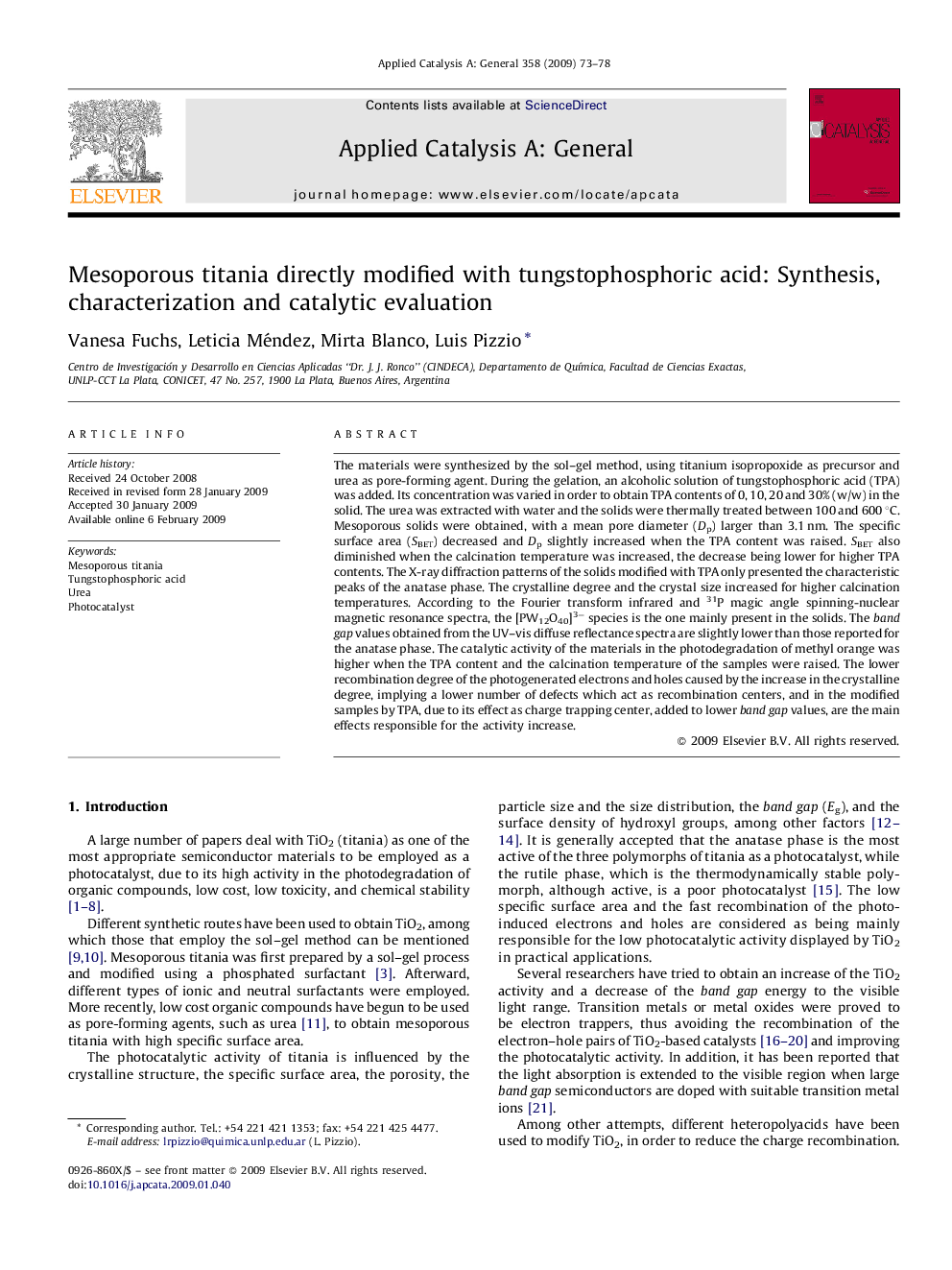| Article ID | Journal | Published Year | Pages | File Type |
|---|---|---|---|---|
| 42930 | Applied Catalysis A: General | 2009 | 6 Pages |
The materials were synthesized by the sol–gel method, using titanium isopropoxide as precursor and urea as pore-forming agent. During the gelation, an alcoholic solution of tungstophosphoric acid (TPA) was added. Its concentration was varied in order to obtain TPA contents of 0, 10, 20 and 30% (w/w) in the solid. The urea was extracted with water and the solids were thermally treated between 100 and 600 °C. Mesoporous solids were obtained, with a mean pore diameter (Dp) larger than 3.1 nm. The specific surface area (SBET) decreased and Dp slightly increased when the TPA content was raised. SBET also diminished when the calcination temperature was increased, the decrease being lower for higher TPA contents. The X-ray diffraction patterns of the solids modified with TPA only presented the characteristic peaks of the anatase phase. The crystalline degree and the crystal size increased for higher calcination temperatures. According to the Fourier transform infrared and 31P magic angle spinning-nuclear magnetic resonance spectra, the [PW12O40]3− species is the one mainly present in the solids. The band gap values obtained from the UV–vis diffuse reflectance spectra are slightly lower than those reported for the anatase phase. The catalytic activity of the materials in the photodegradation of methyl orange was higher when the TPA content and the calcination temperature of the samples were raised. The lower recombination degree of the photogenerated electrons and holes caused by the increase in the crystalline degree, implying a lower number of defects which act as recombination centers, and in the modified samples by TPA, due to its effect as charge trapping center, added to lower band gap values, are the main effects responsible for the activity increase.
Graphical abstractThe activity of mesoporous titania, obtained by sol–gel method using urea as pore-forming agent, directly modified with different concentrations of tungstophosphoric acid, in the photodegradation of methyl orange was higher when the TPA content and the calcination temperature of the samples were raised. A lower recombination of electron–hole pairs, lower band gap, and higher crystallinity of the samples are the main responsible effects.Figure optionsDownload full-size imageDownload as PowerPoint slide
